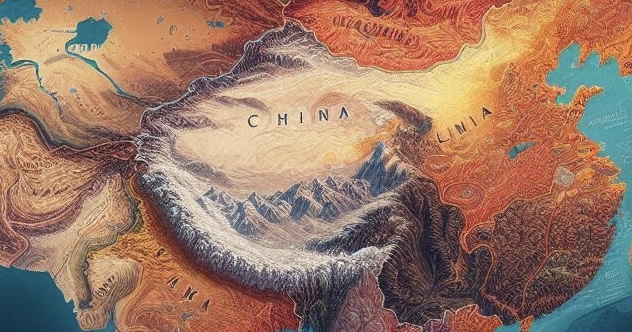Priya Mishra | The TrickyScribe: China’s border disputes with its neighbors have long been a complex and contentious issue, rooted in historical, geographical, and political factors. As one of the world’s largest countries, China shares its borders with 14 nations, including India, Russia, Nepal, Bhutan, Vietnam, and many others. These borders have been the subject of numerous territorial conflicts and tensions over the years, often driven by China’s pursuit of expanding its influence and territorial control. A crucial strategy that China has reportedly employed in these disputes is known as “salami slicing”—a gradual and systematic approach to achieve incremental gains without triggering a full-scale confrontation.

Understanding Salami Slicing in Geopolitical Context
Salami slicing is a term used to describe a strategy where a country gradually and subtly shifts the status quo in its favor by taking small, seemingly insignificant steps. Each individual action might not appear provocative or significant enough to justify a major response from the affected country, but cumulatively, these actions result in significant territorial or strategic advantages for the aggressor. In the context of China’s border disputes, salami slicing involves making incremental territorial advancements, creating military or civilian infrastructure in disputed areas, and altering the situation on the ground to strengthen its claim without sparking large-scale military conflicts.
China’s Border Disputes: An Overview
China has been involved in several border disputes with its neighboring countries, each with its unique characteristics and geopolitical ramifications. Some of the most notable disputes include:
+ India-China Border Dispute: The most high-profile of China’s border conflicts is with India, primarily focused on the Line of Actual Control (LAC) in the regions of Ladakh and Arunachal Pradesh. The 1962 Sino-Indian War was a turning point in the bilateral relations between the two nations, resulting in China occupying a significant portion of Aksai Chin, a region India claims as its own. More recently, the 2020 Galwan Valley clash highlighted China’s salami slicing tactics as it gradually moved troops into disputed areas, built infrastructure, and claimed territories previously considered neutral or Indian-controlled.
+ South China Sea Dispute: China’s territorial ambitions extend into maritime regions, particularly in the South China Sea. China’s construction of artificial islands and military installations in contested waters has been a classic example of salami slicing in action. By building airstrips, ports, and defense facilities on these islands, China has solidified its claims over the area, despite competing claims from several Southeast Asian nations, including Vietnam, the Philippines, Malaysia, and Brunei. China’s incremental but persistent advancements in the region have altered the geopolitical dynamics, asserting dominance over key shipping lanes and resource-rich areas.
+ Bhutan-China Border Tensions: Despite being a small and peaceful Himalayan kingdom, Bhutan has also found itself entangled in a border dispute with China. The Doklam plateau, situated at the tri-junction of India, Bhutan, and China, became a flashpoint in 2017 when Chinese forces attempted to build a road in the area, leading to a standoff with Indian troops. The incident exemplified China’s salami slicing tactics, as it sought to change the status quo by gradually expanding its presence and infrastructure in a strategically sensitive region.
+ Nepal-China Border Disputes: Though largely underreported, there have been recent concerns over China’s activities along its border with Nepal. Reports suggest that China has been encroaching on Nepalese territories in areas like Humla by constructing infrastructure and shifting border pillars. These actions have raised alarm in Nepal, which fears a gradual loss of territory through China’s incremental advances.
Salami Slicing: A Low-Risk, High-Reward Strategy
The salami slicing strategy offers China several advantages. By advancing its territorial claims in small, calculated steps, China minimizes the risk of a unified and forceful response from its adversaries or the international community. Each slice is strategically insignificant on its own, which makes it difficult for other nations to justify a strong military or diplomatic reaction. Moreover, China’s use of non-military means, such as infrastructure development and civilian settlements in disputed areas, often blurs the line between aggressive expansion and peaceful development.
This approach also leverages the element of surprise, as China’s adversaries struggle to keep up with the pace of its incremental actions. By the time affected nations formulate a response, China has already consolidated its position on the ground. The ambiguity in these moves further complicates diplomatic efforts to resolve disputes, as China can argue that its actions are defensive or within its sovereign rights.
China’s salami slicing tactics pose a significant challenge to regional stability and the international order. Neighboring countries often find themselves in a dilemma—either confront China and risk escalation or acquiesce to its gradual encroachments and lose sovereignty over their territories. The strategy has created an atmosphere of mistrust and insecurity among China’s neighbors, who view its actions as an indication of expansionist ambitions.
These tactics have also strained China’s relations with major powers like the United States and its allies, who view China’s territorial advances as a threat to the rules-based international order. The U.S. and its allies have increased their military presence in the Indo-Pacific region, conducting freedom of navigation operations and strengthening ties with countries like India, Japan, Australia, and Southeast Asian nations to counterbalance China’s growing influence.
Total Views: 2,11,277